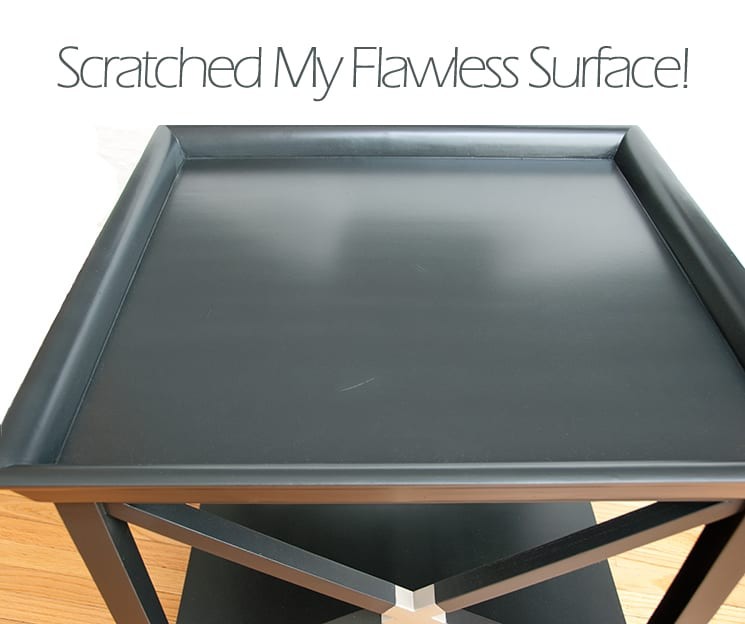Painting is a fantastic way to refresh your home, furniture, or creative projects. Whether you’re giving your living room walls a new color, upcycling an old dresser, or working on an art piece, understanding the paint drying process is crucial. However, many people wonder, “How Long Does It Take For Paint To Dry?” and are often surprised to learn that drying is just the first step. There’s a significant difference between paint being dry to the touch and fully cured. Rushing the process can lead to frustrating smudges, scratches, and a finish that doesn’t last.
To achieve a durable and beautiful painted finish, it’s essential to understand not just drying time, but also curing time. Let’s dive into the details of paint drying and curing, and how long each process actually takes.
Drying vs. Curing: Understanding the Difference
It’s easy to assume that once paint is dry to the touch, the job is done. However, this is a common misconception that can lead to damage and rework. Paint drying and paint curing are two distinct phases in the paint’s journey to a hardened, finished state.
Paint Drying: Evaporation of Solvents
When you apply paint, it contains solvents (like water or oil, depending on the paint type) that keep the pigments and binders in a liquid form. “Paint dry” refers to the stage where these solvents evaporate. As the solvents escape into the air, the paint becomes dry to the touch. This can happen relatively quickly, sometimes within an hour or two, depending on factors like temperature, humidity, and paint type. At this stage, the paint film is still quite soft and vulnerable.
Paint Curing: Achieving Maximum Hardness
“Paint curing,” on the other hand, is a much longer process. Curing is when the paint film undergoes a chemical reaction, causing the paint molecules to cross-link and harden completely. This process leads to maximum durability, hardness, and resistance to scratches, chips, and stains. Curing can take anywhere from several days to several weeks, depending on the type of paint. Even though the surface feels dry, the paint film is still hardening and becoming more robust during the curing phase.
Understanding this difference is key to preventing damage and ensuring a long-lasting paint job. Using painted items or subjecting them to stress before they are fully cured is a recipe for disappointment, as illustrated by a common experience: placing an object on a freshly painted surface that feels dry, only to find an imprint later.
 Close up of scratched black table surface showing paint damage, illustrating the importance of paint curing time
Close up of scratched black table surface showing paint damage, illustrating the importance of paint curing time
Paint Drying and Curing Times: A Quick Guide
The type of paint you use significantly impacts both drying and curing times. Here’s a general guide to give you an idea of what to expect:
| Paint Type | Dry Time (to the touch) | Cure Time |
|---|---|---|
| Water-Based/Latex Paint | 1-2 hours | 21-30 days |
| Oil-Based Paint | 6-8 hours | 3-7 days |
| Chalk Paint | 30-60 minutes | 30 days |
| Homemade Chalky Paint | 30-60 minutes | 21-30 days |
| Milk Paint | 30 minutes | 30 days |
| Acrylic Paint | 20-30 minutes | 7-30 days (depending on thickness) |
Important Note: These are estimated times. Always refer to the manufacturer’s instructions on your specific paint can for the most accurate drying and curing time recommendations.
Factors Influencing Paint Drying and Curing Time
Several factors can affect how quickly or slowly your paint dries and cures. Being aware of these can help you manage your painting projects more effectively:
- Thickness of Paint Application: Thicker coats of paint will naturally take longer to dry and cure. Applying thin, even coats is always preferable for faster drying and better curing.
- Surface Material: The surface you’re painting on plays a role. Porous surfaces like wood can absorb some of the paint’s solvents, potentially affecting drying time compared to non-porous surfaces like metal or melamine.
- Paint Sheen: Different paint sheens (flat, eggshell, satin, semi-gloss, high-gloss) can have slightly varying drying and curing times due to their different formulations.
- Paint Type and Brand: As seen in the table, the type of paint is a major factor. Furthermore, different brands within each paint type may have slightly different formulations, leading to variations in drying and curing times. Always check the product specifications.
- Paint Color and Pigments: Darker paint colors often contain more pigments, which can sometimes extend drying times compared to lighter colors.
- Environmental Conditions:
- Temperature: Warmer temperatures generally promote faster drying. However, extremely high temperatures can cause the paint to dry too quickly on the surface, trapping solvents underneath and potentially leading to issues later. Ideal temperatures are usually between 70-80°F (21-27°C).
- Humidity: High humidity slows down the evaporation of water-based paints, thus increasing drying time. Good ventilation and lower humidity levels are conducive to faster drying.
- Airflow: Good airflow helps solvents evaporate more quickly. Ensure adequate ventilation in your painting area.
- Number of Coats: Each additional coat of paint will require its own drying and curing time. Factor this in when planning multi-coat projects.
How to Check if Paint is Dry
The simplest way to check if paint is dry to the touch is the touch test. Gently touch an inconspicuous area of the painted surface with your fingertip.
- Dry: If the paint feels dry and doesn’t feel tacky or leave any paint on your finger, it’s likely dry to the touch.
- Not Dry: If the paint feels sticky, tacky, or comes off on your finger, it needs more drying time.
Even if the paint is dry to the touch, remember it’s likely not fully cured yet.
How to Check if Paint is Cured
To assess if your paint has cured, perform the fingernail test in an inconspicuous area:
- Press: Gently press your fingernail into the painted surface and apply slight pressure.
- Inspect: Examine the area where you pressed.
- Cured: If the paint surface is hard and doesn’t leave an indent or mark from your fingernail, it’s likely cured.
- Not Cured: If your fingernail leaves an indent or mark, the paint is still curing and needs more time to harden.
If you are unsure, it’s always best to err on the side of caution and allow for longer curing times, especially for items that will see heavy use. Patience is truly a virtue when it comes to painting and achieving a professional, lasting finish.
By understanding the difference between paint drying and curing, and by considering the factors that influence these processes, you can achieve beautiful and durable painted results every time. Take your time, allow for proper drying and curing, and enjoy the satisfaction of a job well done.
